
Kevin Mason
As we have stated multiple times over the past months, demand is not coming to the rescue for this industry, thus capacity rationalization and supply discipline are crucial. The traditional refrain in the commodity space is that “low prices are the cure for low prices.” Well, prices are depressingly low for many key commodities, notably pulp, lumber and OSB, with precious little rationalization to date. Although some current commodity prices are slightly above trough levels, costs have risen substantially since then. Many softwood pulp mills in Canada and Scandinavia are losing money at these levels, yet there has been only a smattering of downtime concentrated in Finland. The tolerance for pain has been surprising!
For lumber, even with punitive duties on Canadians, a lot of production continues to run despite losing $100‒150/mbf. SYP prices are also horribly low and stuck below cash-cost levels. US producers expect Canadians to take the brunt of the closures, but they will likely need to curtail production as well given that the substitution of SYP for S-P-F is not happening at the speed many had hoped. Canadian sawmill shuts should also spur pulp mill shuts. On OSB, mills are in the money-losing zone and there is more capacity on the horizon with Kronospan and Huber mills soon to start up. Supply needs to be removed, but aside from a couple of temporary shuts from Arbec, nothing has transpired.
 Prime Minister Mark Carney is set to head to Washington early next week to meet with US. President Trump. …Foreign Affairs Minister Anita Anand, Industry Minister Melanie Joly and Canada-U.S. Trade Minister Dominic LeBlanc will accompany Carney. This latest visit comes as Canadian and U.S. officials try to reach a deal on punishing American tariffs, and as a review of the Canada-U.S.-Mexico Agreement gets underway. …Over the summer, the U.S. hiked its tariffs on steel and aluminum imports to 50%, with Canada imposing a 25% counter-tariff on U.S. steel and aluminum. …The source says next week’s meeting follows weeks of groundwork by LeBlanc, Canadian Ambassador to the US Kirsten Hillman and Clerk of the Privy Council Michael Sabia, with the team being aware the discussions could go sideways.
Prime Minister Mark Carney is set to head to Washington early next week to meet with US. President Trump. …Foreign Affairs Minister Anita Anand, Industry Minister Melanie Joly and Canada-U.S. Trade Minister Dominic LeBlanc will accompany Carney. This latest visit comes as Canadian and U.S. officials try to reach a deal on punishing American tariffs, and as a review of the Canada-U.S.-Mexico Agreement gets underway. …Over the summer, the U.S. hiked its tariffs on steel and aluminum imports to 50%, with Canada imposing a 25% counter-tariff on U.S. steel and aluminum. …The source says next week’s meeting follows weeks of groundwork by LeBlanc, Canadian Ambassador to the US Kirsten Hillman and Clerk of the Privy Council Michael Sabia, with the team being aware the discussions could go sideways.
 The United Steelworkers union (USW) is denouncing the latest escalation in Trump’s trade war, following his September 29 proclamation imposing a 10% tariff on Canadian softwood lumber exports to the US. …“For decades, Canadian lumber has supported the US housing market, keeping construction costs down for American families while sustaining good jobs here at home,” said Marty Warren, USW National Director. “Instead of recognizing that reality, Trump has chosen to pursue reckless trade policies that will drive up housing prices in the US and put tens of thousands of Canadian jobs at risk.” …Jeff Bromley, Chair of the USW Wood Council, underscored the toll on workers and communities across the country. “With nearly half the value of every Canadian lumber shipment being siphoned off at the border, sawmills, logging operations and whole towns in Canada are facing devastating consequences.” …The Steelworkers are urging the federal government to respond with urgency and resolve.
The United Steelworkers union (USW) is denouncing the latest escalation in Trump’s trade war, following his September 29 proclamation imposing a 10% tariff on Canadian softwood lumber exports to the US. …“For decades, Canadian lumber has supported the US housing market, keeping construction costs down for American families while sustaining good jobs here at home,” said Marty Warren, USW National Director. “Instead of recognizing that reality, Trump has chosen to pursue reckless trade policies that will drive up housing prices in the US and put tens of thousands of Canadian jobs at risk.” …Jeff Bromley, Chair of the USW Wood Council, underscored the toll on workers and communities across the country. “With nearly half the value of every Canadian lumber shipment being siphoned off at the border, sawmills, logging operations and whole towns in Canada are facing devastating consequences.” …The Steelworkers are urging the federal government to respond with urgency and resolve. 
 Canada’s forest products sector strongly opposes the US administration’s decision to impose additional punitive tariffs not only on softwood lumber but also on derivative products, including furniture and kitchen cabinets. The targeting of Canada’s forestry products under Section 232 of the Trade Expansion Act is unjustified and disregards decades of evidence and cooperation that confirm Canadian forest products strengthen, rather than threaten, US national security. This broad action further undermines a deeply integrated North American supply chain that supports housing affordability, infrastructure, manufacturing, and shared prosperity and security on both sides of the border. …The new Section 232 tariffs pushes the total duty burden to over 45%. This compounds pressure, distorts markets, threatens jobs on both sides of the border, and escalates trade tensions. …This misguided move risks raising housing costs in the United States and undermines the integrated trade relationship that has provided jobs, investment, and prosperity in both countries,” said Nighbor.
Canada’s forest products sector strongly opposes the US administration’s decision to impose additional punitive tariffs not only on softwood lumber but also on derivative products, including furniture and kitchen cabinets. The targeting of Canada’s forestry products under Section 232 of the Trade Expansion Act is unjustified and disregards decades of evidence and cooperation that confirm Canadian forest products strengthen, rather than threaten, US national security. This broad action further undermines a deeply integrated North American supply chain that supports housing affordability, infrastructure, manufacturing, and shared prosperity and security on both sides of the border. …The new Section 232 tariffs pushes the total duty burden to over 45%. This compounds pressure, distorts markets, threatens jobs on both sides of the border, and escalates trade tensions. …This misguided move risks raising housing costs in the United States and undermines the integrated trade relationship that has provided jobs, investment, and prosperity in both countries,” said Nighbor. President Trump on Monday ordered significant new tariffs on wood and various wooden products, including imported lumber, timber, kitchen cabinets and upholstered furniture – potentially adding costs to homebuilding and furnishing, which have surged in price in recent months. In a proclamation, Trump said the United States would begin charging a 10% tariff on foreign softwood lumber and timber, used in a wide variety of building materials. He also announced a 25% tariff on kitchen cabinets, vanities and upholstered wooden furniture. Those rates are set to go into effect October 14. On January 1, Trump will boost the tariff on cabinets to 50% and upholstered furniture to 30%. He first announced those new tariffs on Thursday. …“In my judgment, the actions in this proclamation will strengthen supply chains, bolster industrial resilience, create high-quality jobs, and increase domestic capacity utilization for wood products such that the US can fully satisfy domestic consumption while also creating economic benefits through increased exports,” Trump wrote.
President Trump on Monday ordered significant new tariffs on wood and various wooden products, including imported lumber, timber, kitchen cabinets and upholstered furniture – potentially adding costs to homebuilding and furnishing, which have surged in price in recent months. In a proclamation, Trump said the United States would begin charging a 10% tariff on foreign softwood lumber and timber, used in a wide variety of building materials. He also announced a 25% tariff on kitchen cabinets, vanities and upholstered wooden furniture. Those rates are set to go into effect October 14. On January 1, Trump will boost the tariff on cabinets to 50% and upholstered furniture to 30%. He first announced those new tariffs on Thursday. …“In my judgment, the actions in this proclamation will strengthen supply chains, bolster industrial resilience, create high-quality jobs, and increase domestic capacity utilization for wood products such that the US can fully satisfy domestic consumption while also creating economic benefits through increased exports,” Trump wrote.
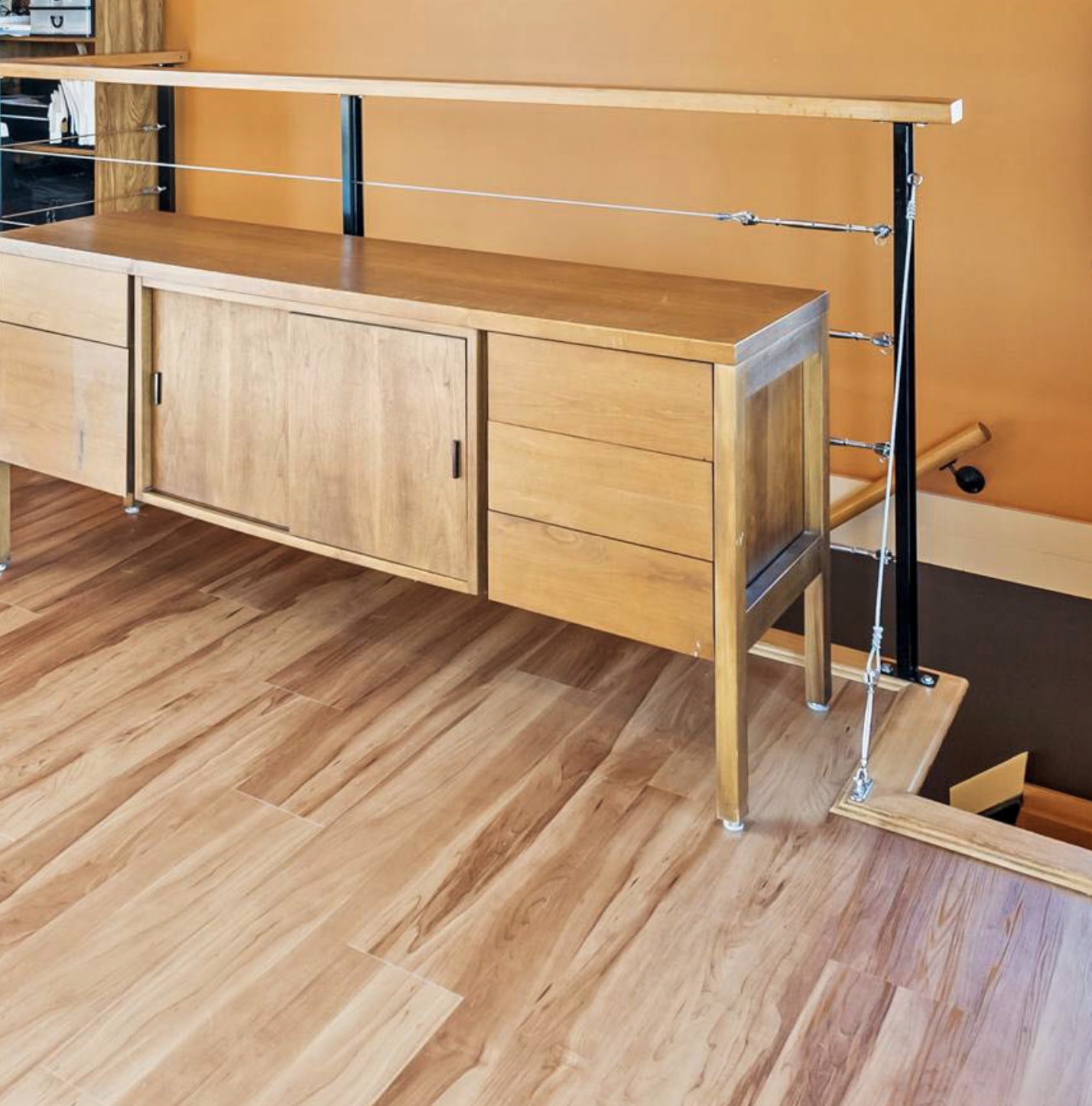 WASHINGTON, D.C. — On Oct. 1, 2025, nine presidents and CEOs representing American manufacturers of hardwood plywood, engineered wood flooring, and hardwood veneer asked President Trump to add their products to the recently announced Section 232 tariffs on wood products. The current 232 tariff proposal focuses on cabinets, vanities, lumber, upholstered furniture, and other products. Section 232 tariffs are trade restrictions, such as import duties, that the President of the United States can impose on goods that are found to threaten national security. According to the group of companies, more than 100,000 American manufacturing jobs are threatened by the “flood of dumped and subsidized decorative hardwood product imports from outside of North America.” The group pointed to the news that Roseburg Forest Products had closed its last hardwood plywood mill and exited the hardwood plywood market as a result of these imports, which the company said dominate 80% of the U.S. market.
WASHINGTON, D.C. — On Oct. 1, 2025, nine presidents and CEOs representing American manufacturers of hardwood plywood, engineered wood flooring, and hardwood veneer asked President Trump to add their products to the recently announced Section 232 tariffs on wood products. The current 232 tariff proposal focuses on cabinets, vanities, lumber, upholstered furniture, and other products. Section 232 tariffs are trade restrictions, such as import duties, that the President of the United States can impose on goods that are found to threaten national security. According to the group of companies, more than 100,000 American manufacturing jobs are threatened by the “flood of dumped and subsidized decorative hardwood product imports from outside of North America.” The group pointed to the news that Roseburg Forest Products had closed its last hardwood plywood mill and exited the hardwood plywood market as a result of these imports, which the company said dominate 80% of the U.S. market. Much of the federal government shutdown in the early hours of Oct. 1 after federal lawmakers failed to reach a funding deal. If the shutdown persists, work related to federal data reporting, rulemakings and other regulatory initiatives could face delays. Ahead of the shutdown, many federal agencies published contingency plans on how work at those agencies may be impacted in the short term. …The USDA is expected to furlough 42,256 of its 85,907 employees, equating to more than 49% of the agency’s workforce. Data products and website updates offered by the USDA’s National Agricultural Statistics Service and Foreign Agricultural Service are among agency activities that are expected to cease during the funding lapse. …FAS also publishes a variety of data of interest to bioenergy producers, including monthly export data on ethanol, distillers grains, biodiesel and wood pellets. FAS also publishes reports that provide insight on foreign markets for biofuels and wood pellets.
Much of the federal government shutdown in the early hours of Oct. 1 after federal lawmakers failed to reach a funding deal. If the shutdown persists, work related to federal data reporting, rulemakings and other regulatory initiatives could face delays. Ahead of the shutdown, many federal agencies published contingency plans on how work at those agencies may be impacted in the short term. …The USDA is expected to furlough 42,256 of its 85,907 employees, equating to more than 49% of the agency’s workforce. Data products and website updates offered by the USDA’s National Agricultural Statistics Service and Foreign Agricultural Service are among agency activities that are expected to cease during the funding lapse. …FAS also publishes a variety of data of interest to bioenergy producers, including monthly export data on ethanol, distillers grains, biodiesel and wood pellets. FAS also publishes reports that provide insight on foreign markets for biofuels and wood pellets.  The Trump administration on Monday announced tariffs on imported wood products, targeting softwood lumber, timber, kitchen cabinets, vanities and upholstered furniture. …Trump’s proclamation said wood product imports were weakening the US economy, resulting in a persistent threat to the US supply chains and harming the domestic wood industry. “Because of the state of the United States wood industry, the US may be unable to meet demands for wood products that are crucial to the national defense and critical infrastructure,” the proclamation said. …Critics of the tariffs have voiced concern that the new duties will inflate costs for American consumers and builders. Former US Rep. Matt Cartwright, (D-Pennsylvania), said safety will suffer as a result of the new tariff on imports of trucks. …“A lot of these companies are already on shoestring budgets, and unfortunately the first thing that gets cut when costs go up is safety,” Cartwright said.
The Trump administration on Monday announced tariffs on imported wood products, targeting softwood lumber, timber, kitchen cabinets, vanities and upholstered furniture. …Trump’s proclamation said wood product imports were weakening the US economy, resulting in a persistent threat to the US supply chains and harming the domestic wood industry. “Because of the state of the United States wood industry, the US may be unable to meet demands for wood products that are crucial to the national defense and critical infrastructure,” the proclamation said. …Critics of the tariffs have voiced concern that the new duties will inflate costs for American consumers and builders. Former US Rep. Matt Cartwright, (D-Pennsylvania), said safety will suffer as a result of the new tariff on imports of trucks. …“A lot of these companies are already on shoestring budgets, and unfortunately the first thing that gets cut when costs go up is safety,” Cartwright said. NEW ZEALAND — News that US President Trump imposed a tariff of 10 percent on imported timber has come as a relief to industry, which expected a higher figure. Mark Ross, chief executive of the Wood Processors and Manufacturers Association, said it was a relief as they thought it would be higher. “We’ve been working through the essential impact of a tariff on our products since March this year so it wasn’t a shock because we were, at one point, expecting a 50% tariff. “So 10% is a bit of relief. It is still going to have a financial impact on the wood processing industry in New Zealand. …Ross said they were working with exporters to work out how to handle the extra costs. …Ross said the United States was New Zealand’s third-largest export market and continued to grow.
NEW ZEALAND — News that US President Trump imposed a tariff of 10 percent on imported timber has come as a relief to industry, which expected a higher figure. Mark Ross, chief executive of the Wood Processors and Manufacturers Association, said it was a relief as they thought it would be higher. “We’ve been working through the essential impact of a tariff on our products since March this year so it wasn’t a shock because we were, at one point, expecting a 50% tariff. “So 10% is a bit of relief. It is still going to have a financial impact on the wood processing industry in New Zealand. …Ross said they were working with exporters to work out how to handle the extra costs. …Ross said the United States was New Zealand’s third-largest export market and continued to grow.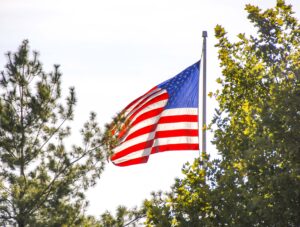 The Commerce Department in a shutdown contingency plan released Monday said it will continue “the necessary work to address the effect of imported articles on national security.” The contingency guidelines mark a subtle shift from the previous plan, which said investigations would continue with unexpired funds if Congress failed to approve additional spending by the end of the fiscal year on Sept. 30. By claiming a national security rationale for the investigations, the administration can continue work on probes being conducted under Section 232 of the Trade Expansion Act. That provision allows for the imposition of tariffs on goods deemed critical to national security. …Section 232 investigations could take on even greater weight if the Supreme Court strikes down Trump’s use of the International Emergency Economic Powers Act. [to access the full story a Bloomberg subscription is required]
The Commerce Department in a shutdown contingency plan released Monday said it will continue “the necessary work to address the effect of imported articles on national security.” The contingency guidelines mark a subtle shift from the previous plan, which said investigations would continue with unexpired funds if Congress failed to approve additional spending by the end of the fiscal year on Sept. 30. By claiming a national security rationale for the investigations, the administration can continue work on probes being conducted under Section 232 of the Trade Expansion Act. That provision allows for the imposition of tariffs on goods deemed critical to national security. …Section 232 investigations could take on even greater weight if the Supreme Court strikes down Trump’s use of the International Emergency Economic Powers Act. [to access the full story a Bloomberg subscription is required]
 Although we are skeptical how effective the C$500 million in “transition” funding will be, the C$700 million in loan guarantees, which are clearly designed as a short-term lifeline for companies to weather the storm, seem pretty meaningful to the Canadian industry at first glance. …If Canadian producers were to simply absorb the incremental duty rate increase, using today’s FOB price for most Canadian softwood lumber and last year’s export volumes to the US translates to a “just pay it” cost of C$1.6-1.7 billion in additional duty payments over the next 12 months. Canadian mill operators are not in a financial position to simply absorb an additional 21-percentage-point increase in duties, so this is an extreme estimate of the true cost. Mills will curtail output rather than continue producing at heavy losses until prices adjust accordingly. Additionally, there is usually some degree of passthrough from the buyer to the seller.
Although we are skeptical how effective the C$500 million in “transition” funding will be, the C$700 million in loan guarantees, which are clearly designed as a short-term lifeline for companies to weather the storm, seem pretty meaningful to the Canadian industry at first glance. …If Canadian producers were to simply absorb the incremental duty rate increase, using today’s FOB price for most Canadian softwood lumber and last year’s export volumes to the US translates to a “just pay it” cost of C$1.6-1.7 billion in additional duty payments over the next 12 months. Canadian mill operators are not in a financial position to simply absorb an additional 21-percentage-point increase in duties, so this is an extreme estimate of the true cost. Mills will curtail output rather than continue producing at heavy losses until prices adjust accordingly. Additionally, there is usually some degree of passthrough from the buyer to the seller. The softwood lumber trade dispute between the US and Canada, which has led to ever-higher US import duties on Canadian lumber, has lasted for decades. …Canadian lumber has the backing NAHB, which sees lumber tariffs as exacerbating high costs for builders and worsening the US housing affordability crisis. There is currently a “Wall of Wood” in the US, after Canadian producers increased shipments to the US in anticipation of the hike to existing ADD and CVD duties in August. Expectations that a large increase in duties would force the closure of Canadian sawmills, lead to shortages, and a boost in lumber prices, overlooked the current weak US demand for lumber, according to Matt Layman. …As US homebuilders now face additional tariff-driven costs, including a 50% tariff on cabinets and vanities, it’s hard to see the lumber demand situation improving, even if more Canadian suppliers have to curtail production or close sawmills.
The softwood lumber trade dispute between the US and Canada, which has led to ever-higher US import duties on Canadian lumber, has lasted for decades. …Canadian lumber has the backing NAHB, which sees lumber tariffs as exacerbating high costs for builders and worsening the US housing affordability crisis. There is currently a “Wall of Wood” in the US, after Canadian producers increased shipments to the US in anticipation of the hike to existing ADD and CVD duties in August. Expectations that a large increase in duties would force the closure of Canadian sawmills, lead to shortages, and a boost in lumber prices, overlooked the current weak US demand for lumber, according to Matt Layman. …As US homebuilders now face additional tariff-driven costs, including a 50% tariff on cabinets and vanities, it’s hard to see the lumber demand situation improving, even if more Canadian suppliers have to curtail production or close sawmills. Lumber futures prices are trading higher after President Trump slapped a 10% tariff on wood imports. Lumber prices have been on a rollercoaster this year, lifted by higher import taxes and tugged lower by the deteriorating housing and construction markets. …Trump’s executive order said the additional 10% tariff, which will also raise the price of lumber from European suppliers like Germany and Sweden, is aimed at protecting domestic sawmills. …Analysts expect the tariff to benefit domestic sawyers and timberland owners, such as Weyerhaeuser and PotlatchDeltic, at the expense of competitors north of the border, who have been losing US market share because of the duties, challenges supplying their sawmills with logs and the abundance of cheap US pine. “Canadian lumber producers’ cash costs should further increase, resulting in capacity closures and a tightening of lumber supply-demand dynamics,” said Michael Roxland of Truist Securities. [to access the full story a WSJ subscription is required]
Lumber futures prices are trading higher after President Trump slapped a 10% tariff on wood imports. Lumber prices have been on a rollercoaster this year, lifted by higher import taxes and tugged lower by the deteriorating housing and construction markets. …Trump’s executive order said the additional 10% tariff, which will also raise the price of lumber from European suppliers like Germany and Sweden, is aimed at protecting domestic sawmills. …Analysts expect the tariff to benefit domestic sawyers and timberland owners, such as Weyerhaeuser and PotlatchDeltic, at the expense of competitors north of the border, who have been losing US market share because of the duties, challenges supplying their sawmills with logs and the abundance of cheap US pine. “Canadian lumber producers’ cash costs should further increase, resulting in capacity closures and a tightening of lumber supply-demand dynamics,” said Michael Roxland of Truist Securities. [to access the full story a WSJ subscription is required]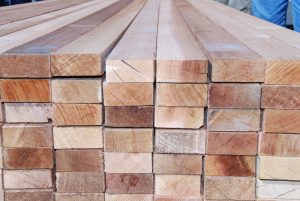 The Trump administration’s latest tariffs on housing materials could raise the average cost of building a single-family home by nearly $9,000, according to a report Tuesday from UBS. Research analyst John Lovallo said the new levies include “an incremental 10% Section 232 tariff on softwood timber and lumber imports, as well as 25% levies on kitchen cabinets, vanities and upholstered wood products.” UBS estimates the lumber tariff will add about $720 per home, while cabinet and vanity tariffs could tack on another $280. Upholstered wood products were not included in the calculation because they are generally purchased by homeowners rather than builders. “As a result, we now estimate the total tariff impact on the cost to construct an average home at approximately $8.9K,” Lovallo wrote. …“Importantly, we continue to believe this cost impact will be spread throughout the entire housing value chain, with the builders perhaps best positioned to push back on suppliers,” he said.
The Trump administration’s latest tariffs on housing materials could raise the average cost of building a single-family home by nearly $9,000, according to a report Tuesday from UBS. Research analyst John Lovallo said the new levies include “an incremental 10% Section 232 tariff on softwood timber and lumber imports, as well as 25% levies on kitchen cabinets, vanities and upholstered wood products.” UBS estimates the lumber tariff will add about $720 per home, while cabinet and vanity tariffs could tack on another $280. Upholstered wood products were not included in the calculation because they are generally purchased by homeowners rather than builders. “As a result, we now estimate the total tariff impact on the cost to construct an average home at approximately $8.9K,” Lovallo wrote. …“Importantly, we continue to believe this cost impact will be spread throughout the entire housing value chain, with the builders perhaps best positioned to push back on suppliers,” he said.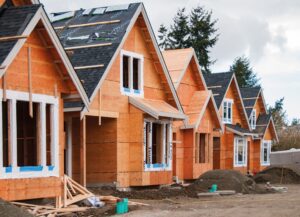 President Trump ordered fresh tariffs on softwood timber, lumber, and wood furnishings, even as housing groups warn the move could drive up construction costs and furniture-industry advocates said the levies would lead to US job losses. The tariffs may, however, prove more legally durable than Trump’s reciprocal country-by-country penalties because they fall under Section 232 of the Trade Expansion Act, the same legal tool the White House has used to justify duties on steel and aluminum. …The measures hit Canada especially hard because the country already faces duties of more than 35%, a result of recent but separate trade initiatives. Publicly traded lumber producers most directly exposed include Canada’s West Fraser Timber, Canfor, and Interfor. In the US, Weyerhaeuser, Boise Cascade, and Louisiana-Pacific are the closest listed peers, with stocks prices that often move in step with lumber tariffs and demand. US-based furniture retailers may also experience pain, with many dependent on foreign wood.
President Trump ordered fresh tariffs on softwood timber, lumber, and wood furnishings, even as housing groups warn the move could drive up construction costs and furniture-industry advocates said the levies would lead to US job losses. The tariffs may, however, prove more legally durable than Trump’s reciprocal country-by-country penalties because they fall under Section 232 of the Trade Expansion Act, the same legal tool the White House has used to justify duties on steel and aluminum. …The measures hit Canada especially hard because the country already faces duties of more than 35%, a result of recent but separate trade initiatives. Publicly traded lumber producers most directly exposed include Canada’s West Fraser Timber, Canfor, and Interfor. In the US, Weyerhaeuser, Boise Cascade, and Louisiana-Pacific are the closest listed peers, with stocks prices that often move in step with lumber tariffs and demand. US-based furniture retailers may also experience pain, with many dependent on foreign wood.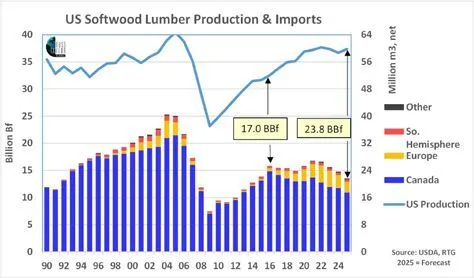
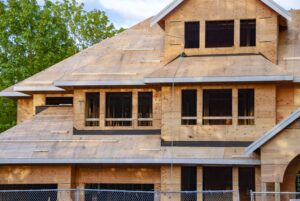 President Donald Trump has reignited debate over the nation’s housing shortage, calling on Fannie Mae and Freddie Mac to spur a wave of new home construction. Trump accused large homebuilders of “sitting on 2 million empty lots, a record,” and likened their behavior to OPEC’s control of oil prices. …“I’m asking Fannie Mae and Freddie Mac to get Big Homebuilders going and, by so doing, help restore the American Dream!” The president’s comments come as housing inventory has rebounded from historic lows in 2022, but builders continue to face limited incentives to ramp up construction. …Since taking office, Trump has made housing a central policy focus, including an executive order for emergency price relief and a campaign to pressure the Federal Reserve for lower rates. …Despite Trump’s calls, the mechanics of how Fannie and Freddie might spur more homebuilding remain unclear.
President Donald Trump has reignited debate over the nation’s housing shortage, calling on Fannie Mae and Freddie Mac to spur a wave of new home construction. Trump accused large homebuilders of “sitting on 2 million empty lots, a record,” and likened their behavior to OPEC’s control of oil prices. …“I’m asking Fannie Mae and Freddie Mac to get Big Homebuilders going and, by so doing, help restore the American Dream!” The president’s comments come as housing inventory has rebounded from historic lows in 2022, but builders continue to face limited incentives to ramp up construction. …Since taking office, Trump has made housing a central policy focus, including an executive order for emergency price relief and a campaign to pressure the Federal Reserve for lower rates. …Despite Trump’s calls, the mechanics of how Fannie and Freddie might spur more homebuilding remain unclear. 

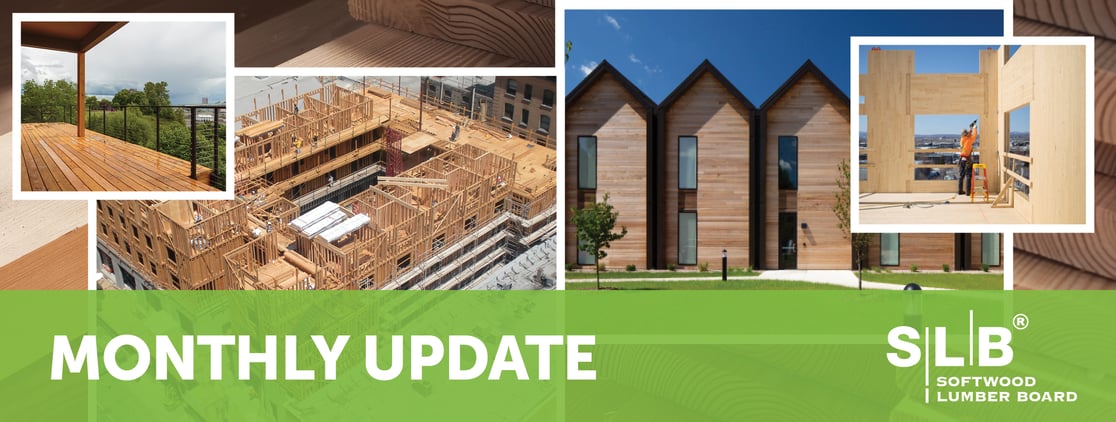 The September monthly update from the Softwood Lumber Board includes these headlines and more:
The September monthly update from the Softwood Lumber Board includes these headlines and more: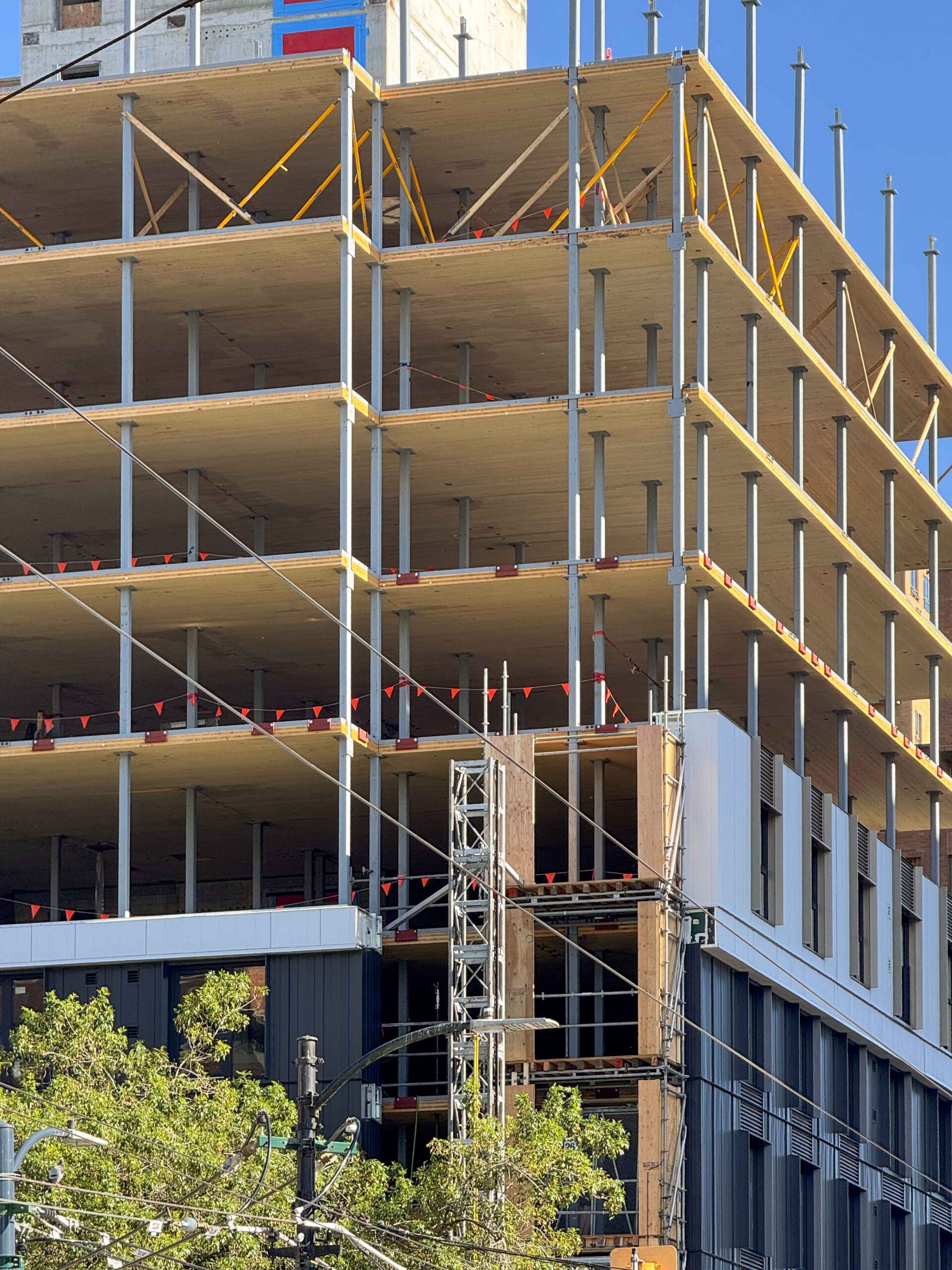 Washington, D.C. – When most people think of ironworkers, mass timber is not the first thing that comes to mind. But that perception is changing fast. The International Association of Bridge, Structural, Ornamental and Reinforcing Iron Workers (Iron Workers), is proving that ironworkers are not only part of the mass timber conversation, but they are the best equipped trade to erect these projects. From landmark projects like the Walmart Headquarters in Arkansas, erected by Iron Workers’ signatory contractor Foust Fab & Erectors, to countless hybrid timber-and-steel structures across the United States and Canada, ironworkers are quietly setting the standard for mass timber erection. Ironworkers have proven that their structural steel expertise, efficiency, and safety culture make them the #1 choice for this growing market. …Our mass timber training is in partnership with WoodWorks, and therefore, third-party validated,” said Iron Workers Executive Director of Apprenticeship and Training James Owens.
Washington, D.C. – When most people think of ironworkers, mass timber is not the first thing that comes to mind. But that perception is changing fast. The International Association of Bridge, Structural, Ornamental and Reinforcing Iron Workers (Iron Workers), is proving that ironworkers are not only part of the mass timber conversation, but they are the best equipped trade to erect these projects. From landmark projects like the Walmart Headquarters in Arkansas, erected by Iron Workers’ signatory contractor Foust Fab & Erectors, to countless hybrid timber-and-steel structures across the United States and Canada, ironworkers are quietly setting the standard for mass timber erection. Ironworkers have proven that their structural steel expertise, efficiency, and safety culture make them the #1 choice for this growing market. …Our mass timber training is in partnership with WoodWorks, and therefore, third-party validated,” said Iron Workers Executive Director of Apprenticeship and Training James Owens. 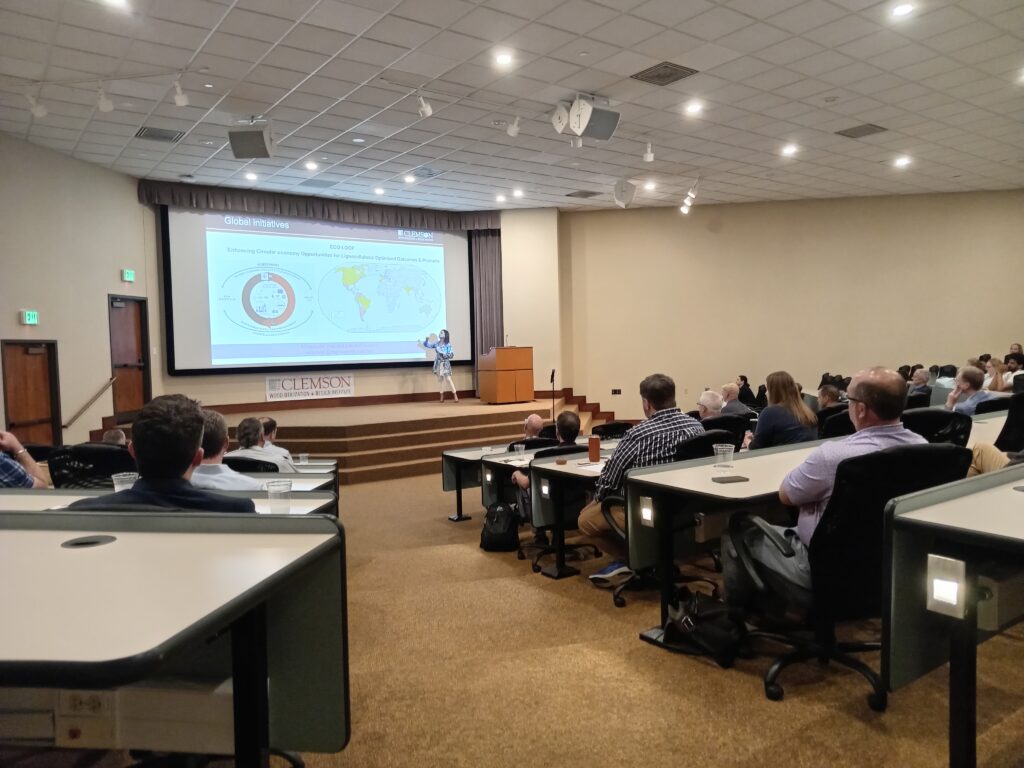
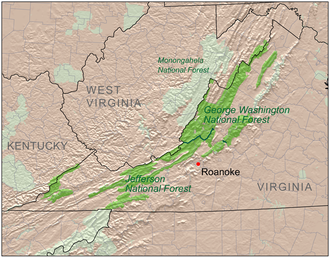
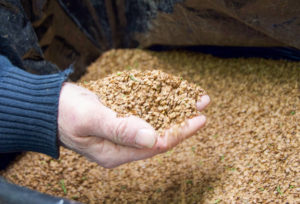 Roughly 500 years ago in California’s High Sierra, pine cones dropped to the ground and a cycle began. …Half a millennia later, US Forest Service scientists began testing strategies to save these now ancient and massive trees in the little-known area east of Fresno called the Teakettle Experimental Forest. They had plans to light a huge prescribed burn to clear overgrowth next year. But then the Garnet Fire ignited and scorched all 3,000 federally protected acres on its path through the Sierra National Forest. …Scott Scherbinski, a biologist at the Climate & Wildfire Institute, said “It will be a start-over event for this forest.” …Malcolm North, a Forest Service ecologist said…fires with less intensity can be beneficial in California’s fire-adapted landscapes, but the Garnet Fire, when it burned through in September, may have killed most trees and sterilized the ground — making it unlikely the forest can rebound without intervention. [to access the full story a San Francisco Chronicle subscription is required]
Roughly 500 years ago in California’s High Sierra, pine cones dropped to the ground and a cycle began. …Half a millennia later, US Forest Service scientists began testing strategies to save these now ancient and massive trees in the little-known area east of Fresno called the Teakettle Experimental Forest. They had plans to light a huge prescribed burn to clear overgrowth next year. But then the Garnet Fire ignited and scorched all 3,000 federally protected acres on its path through the Sierra National Forest. …Scott Scherbinski, a biologist at the Climate & Wildfire Institute, said “It will be a start-over event for this forest.” …Malcolm North, a Forest Service ecologist said…fires with less intensity can be beneficial in California’s fire-adapted landscapes, but the Garnet Fire, when it burned through in September, may have killed most trees and sterilized the ground — making it unlikely the forest can rebound without intervention. [to access the full story a San Francisco Chronicle subscription is required]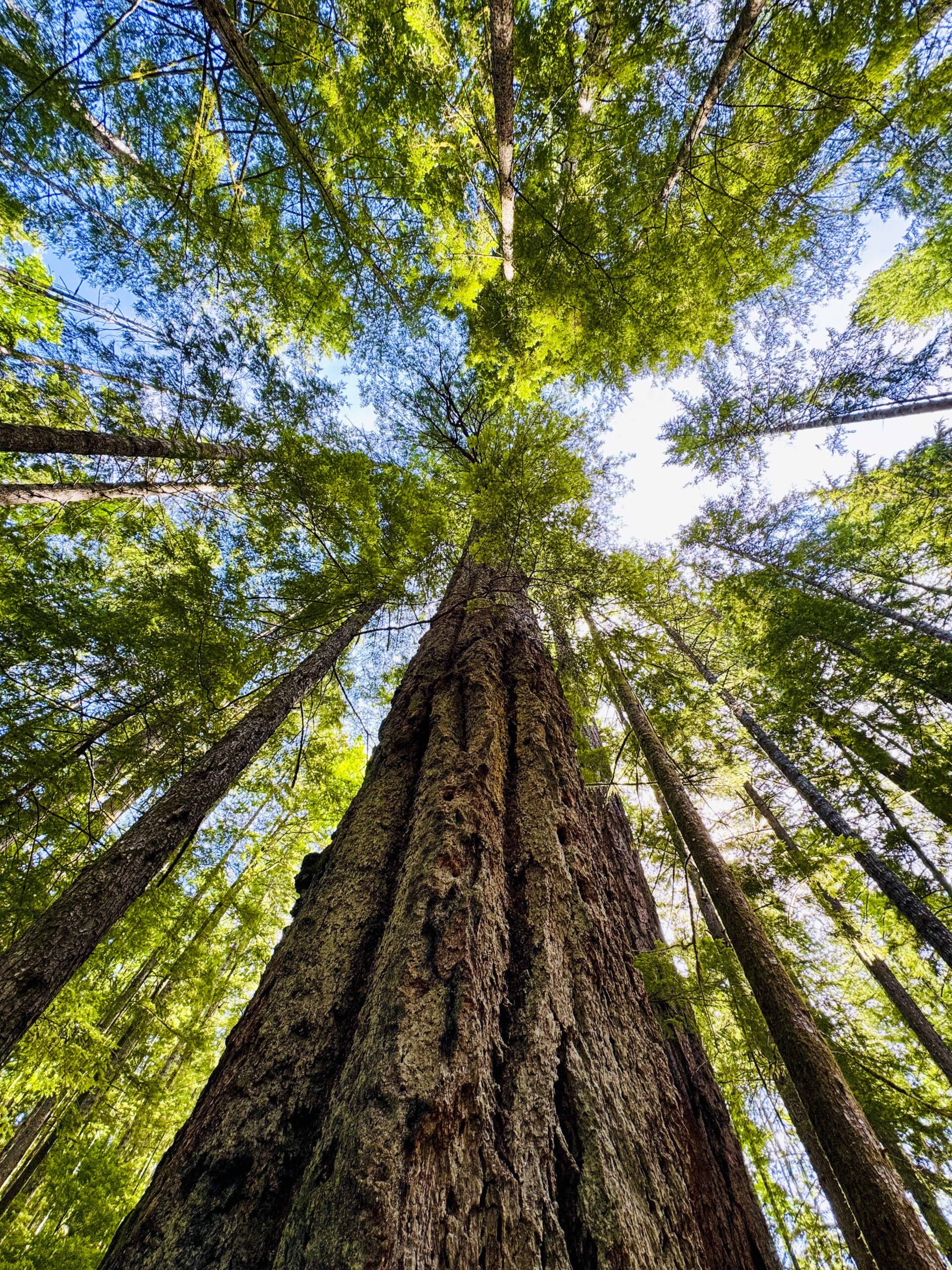 Drought and insects have killed an unprecedented number of Oregon’s Douglas fir trees during the last decade, costing billions in timber value, damaging infrastructure and ramping up wildfire danger. Beginning in 2015 and accelerating with the 2021 heat dome, roughly 635,000 acres of forest have been impacted by what’s known as Douglas fir “dieback” in southwest Oregon and the Willamette Valley. “It’s hitting trees of all sizes, but it’s hitting larger and older trees the hardest,” Max Bennett, a retired forest researcher with Oregon State University, told members of the Oregon Legislature on Sept. 30. “What we’re seeing now is unprecedented.” The dieback has led to $1.1 billion in lost timber value, $500 million in potential road hazard costs and created a tinderbox of forest fuel capable of spawning the West’s most destructive wildfires, a group of foresters and researchers told the House Committee on Agriculture, Land Use, Natural Resources and Water.
Drought and insects have killed an unprecedented number of Oregon’s Douglas fir trees during the last decade, costing billions in timber value, damaging infrastructure and ramping up wildfire danger. Beginning in 2015 and accelerating with the 2021 heat dome, roughly 635,000 acres of forest have been impacted by what’s known as Douglas fir “dieback” in southwest Oregon and the Willamette Valley. “It’s hitting trees of all sizes, but it’s hitting larger and older trees the hardest,” Max Bennett, a retired forest researcher with Oregon State University, told members of the Oregon Legislature on Sept. 30. “What we’re seeing now is unprecedented.” The dieback has led to $1.1 billion in lost timber value, $500 million in potential road hazard costs and created a tinderbox of forest fuel capable of spawning the West’s most destructive wildfires, a group of foresters and researchers told the House Committee on Agriculture, Land Use, Natural Resources and Water.
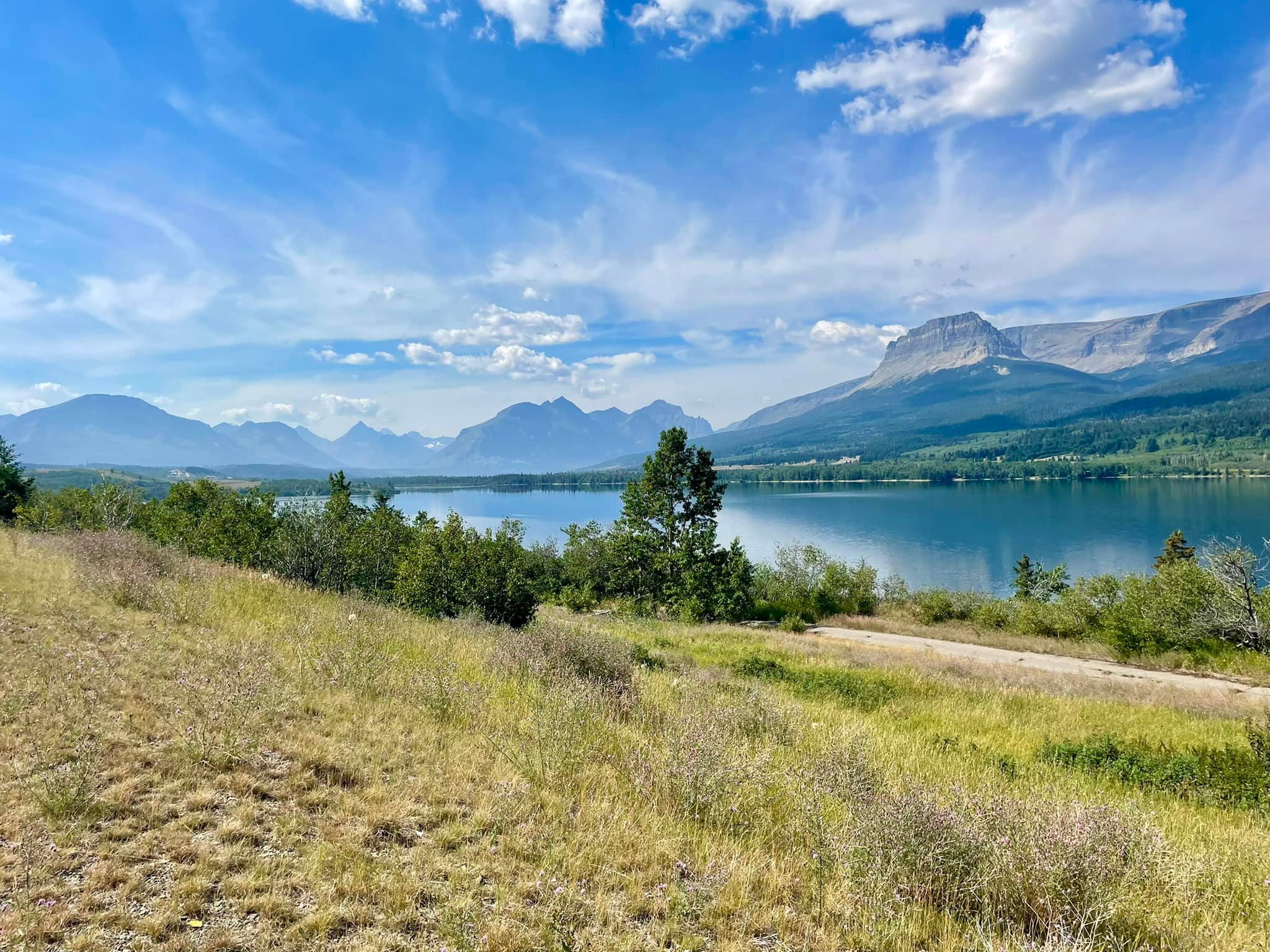 A coalition of conservation groups’ attempt to stop a forest project in Montana’s Bitterroot National Forest fell flat on Tuesday when a magistrate judge recommended the court toss their claims. In her findings and recommendations, U.S. Magistrate Judge Kathleen DeSoto noted inconsistencies in the conservation groups’ arguments across different filings, leading to many of their claims being waived. “Therefore, defendants argue, plaintiffs have conceded these issues,” DeSoto wrote. “Defendants further point out that several of plaintiffs’ arguments are raised for the first time on reply.” The groups challenged the planned Mud Creek Vegetation Management Project, claiming it violates multiple federal conservation acts by failing to provide exact details of where logging and burning will take place, as well as what effects it will have on the environment. The project will include logging, thinning, controlled burns and road construction on 48,000 acres of federal forest. It is intended to mitigate wildfire risk.
A coalition of conservation groups’ attempt to stop a forest project in Montana’s Bitterroot National Forest fell flat on Tuesday when a magistrate judge recommended the court toss their claims. In her findings and recommendations, U.S. Magistrate Judge Kathleen DeSoto noted inconsistencies in the conservation groups’ arguments across different filings, leading to many of their claims being waived. “Therefore, defendants argue, plaintiffs have conceded these issues,” DeSoto wrote. “Defendants further point out that several of plaintiffs’ arguments are raised for the first time on reply.” The groups challenged the planned Mud Creek Vegetation Management Project, claiming it violates multiple federal conservation acts by failing to provide exact details of where logging and burning will take place, as well as what effects it will have on the environment. The project will include logging, thinning, controlled burns and road construction on 48,000 acres of federal forest. It is intended to mitigate wildfire risk.

 MONTANA — With the federal government in a shutdown, the Forest Service has paused much of the wildfire preparation and prevention work it does on its 193 million acres of national forest. A Forest Service contingency plan, current as of Sept. 30, calls for continued wildfire response. But the work necessary to reduce the fuels for massive wildfires, including prescribed burns, is on hold. …“We were told, ‘No ignitions,’” said a Forest Service fire management officer, who didn’t want to be named for fear of losing his job. “‘Don’t even start.’” The cooler, wetter fall season is an ideal time for prescribed burns and pile burning across the West. …Other significant activities will be delayed during the shutdown, including statewide forest inventories, processing special use permits and reimbursing partners like the states and non-governmental organizations that do forest management work with federal funds.
MONTANA — With the federal government in a shutdown, the Forest Service has paused much of the wildfire preparation and prevention work it does on its 193 million acres of national forest. A Forest Service contingency plan, current as of Sept. 30, calls for continued wildfire response. But the work necessary to reduce the fuels for massive wildfires, including prescribed burns, is on hold. …“We were told, ‘No ignitions,’” said a Forest Service fire management officer, who didn’t want to be named for fear of losing his job. “‘Don’t even start.’” The cooler, wetter fall season is an ideal time for prescribed burns and pile burning across the West. …Other significant activities will be delayed during the shutdown, including statewide forest inventories, processing special use permits and reimbursing partners like the states and non-governmental organizations that do forest management work with federal funds.